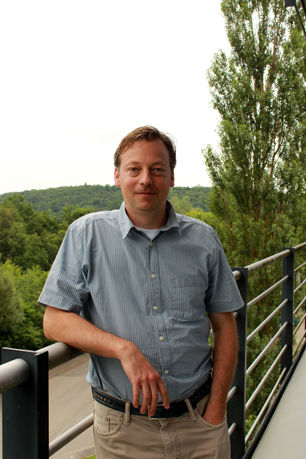Specialized iNANO Lecture: From Designer Nanostructures to Nanorobots
Professor Peer Fischer, Max Planck Institute for Intelligent Systems & Inst. Phys. Chem., Universität Stuttgart, Stuttgart, Germany
Info about event
Time
Location
Meeting room 1590-213, iNANO House, Gustav Wieds Vej 14, 8000 Aarhus C

Professor Peer Fischer1,21Max Planck Institute for Intelligent Systems, Heisenbergstr. 3, 70569 Stuttgart, Germany2Inst. Phys. Chem., Universität Stuttgart, Pfaffenwaldring 55, 70569 Stuttgart, GermanyFrom Designer Nanostructures to NanorobotsTuning the properties of a material requires simultaneous control over composition and shape. For instance the realization of optical metamaterials in the visible calls for structures with feature sizes less than the wavelength of light. Similarly, in order to realize nanomachine parts it is advantageous to combine several materials in one “hybrid-structure”. This is at present not possible in chemical synthesis, as it is particularly challenging to fabricate complex 3D structures at the nanoscale, because surface-energy minimization generally leads to compact high-symmetry shapes. I will present a parallel fabrication method which we have recently developed that lets us rapidly grow hybrid-nanostructures with controlled complex 3D morphology as well as material composition [1]. In one wafer-run we are able to obtain high yields of colloidal metamaterials that contain magnetic, semiconducting, metallic and insulating materials within the same nanostructure. The technique's versatility has allowed us to create films and metafluids based on chiral plasmonic metal nanoparticles with record optical activities, as well as structures that can move autonomously and that can be controllably moved in solutions. Artificial means of realizing motion in micro- and nanostructures relies on local gradients that are established across the nanostructure, resulting in slip velocities at the particle surface, which in turn drives the nanoparticle relative to the fluid. In its simplest form this can be realized with Janus-like nanostructures. I describe what, to the best of my knowledge, are the smallest chemical nanomotors to date. Janus nanoparticles with a diameter of ~30 nm that consist of Pt and Au and that can catalyze the decomposition of hydrogen peroxide to oxygen and water [2]. Finally, I will discuss “swimming” at low Reynolds number and present a case where colloidal structures can be propelled (directed) by external fields similar to a bacterial flagellum and show how the motion of these structures can benefit from the complex rheology in biological media. Although strong Brownian forces dominate in water we achieve controlled propulsion in biological gels, which paves the way for “nanorobot” applications inside biological media and living organisms [3].
| |
Host: Associate professor Mingdong Dong, Interdisciplinary Nanoscience Center, Aarhus University |
